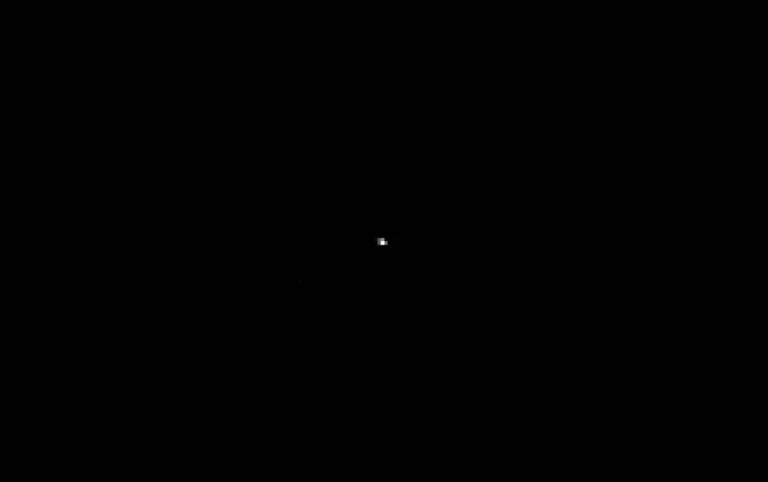
[ad_1]

UTAH TEST AND TRAINING RANGE–Yes, it came from outer space.
An extraterrestrial express delivery package from afar has landed safe and sound on Earth, bringing a multimillion-mile journey billions of years in the making to an end—and marking a new beginning in studies of the solar system’s history.
Gathered from the eons-old near-Earth asteroid Bennu and encased in a sturdy sample-return capsule by NASA’s Origins, Spectral Interpretation, Resource Identification, Security-Regolith Explorer (OSIRIS-REx) spacecraft has brought back the goods: pristine material rich in carbon-based compounds—the feedstock of biology—that is scarcely altered from when Bennu first coalesced around the sun, an event estimated to have occurred more than 4.5 billion years ago. Scientists seeking deeper understanding of how our sun and its planets came to be, and how life’s raw ingredients first found their way to our world, will study the material for generations to come.
For this homecoming, which marks the first U.S. retrieval of samples from an asteroid, it has been a long haul.
OSIRIS-REx launched on September 8, 2016—seven years ago this month. The probe pulled up at Bennu in December 2018. It spent nearly two years carefully mapping the space rock and then snared its precious samples on October 20, 2020.
Almost a half year later, on May 10, 2021, the spacecraft fired its thrusters and left Bennu behind. Ever since that “moving day” departure, OSIRIS-REx has been cruising back home. In recent weeks a set of fine-tuning maneuvers precisely nudged the craft into a flyby trajectory of Earth for the finale of its primary mission—the casting off of its sample return capsule for a four-hour solo space trek to the outer limits of our planet’s atmosphere.
Taking the Plunge
Following a high-speed, fiery plunge through Earth’s atmosphere, at 8:52 A.M. local time the sample-packed OSIRIS-REx return capsule parachuted to a soft landing in the Department of Defense Dugway Proving Ground in the Utah Test and Training Range, roughly 80 miles west of Salt Lake City, Utah.
An array of Air Force and NASA tracking cameras drew a bead on the incoming capsule as it hot-footed its way toward terra firma and a targeted 250-square-mile landing ellipse. After pinpointing the capsule’s resting place, a select group of awaiting technicians, scientists and other specialists quickly made their own voyage via helicopters to the remote landing spot. Extensive practice sessions made for a smooth, step-by-step recovery of the booty from Bennu.
After placing the capsule in a protective bag and slinging it on a lengthy line under the belly of a helicopter, recovery personnel flew it to a cramped, portable clean room within Dugway Proving Ground facilities. There, after the capsule was cleansed of any lingering desert debris and purged with nitrogen gas, the real work would begin: a select group of OSIRIS-REx team members laboring for several hours to dismantle the capsule and retrieve the specimen-stuffed science canister from within.
Getting to that stage is what Dante Lauretta, OSIRIS-REx’s principal investigator at the University of Arizona, cares about most.
“You rehearse it and rehearse it … to the point where, when that capsule is secured, you are just on autopilot. It’s all muscle memory,” Lauretta told Scientific American in a prelanding interview. “In Utah we will not have a measurement of the sample, and hopefully, we won’t see sample. If we do, then something has cracked open,” he said.
Grab-and-Go Goodies
That canister carries the Touch-and-Go Sample Acquisition Mechanism— TAGSAM for short. This is device that holds the cherished bonanza of asteroid material.
Somewhat counterintuitively, the specifics of TAGSAM’s contents remain a mystery. No one really knows just how much material OSIRIS-REx managed to grab from Bennu—although informed guesstimates from Lockheed Martin personnel peg the amount within a range of about 150 to 350 grams. (The aerospace company built most of the spacecraft’s hardware and also provides mission control.) A couple of hundred grams may not seem like much, but it’s far greater than the 60-gram target the spacecraft team had initially set.
So the bottom-line bounty of how much of Bennu has been hauled back won’t be known for certain until the triple-bagged science canister and its cosmic curiosities are transported by aircraft to NASA’s Johnson Space Center in Houston, Tex., for closer inspection.
If the OSIRIS-REx playbook stays on track, the science canister will depart Utah a day after landing for full disassembly. Lauretta said he’s anxious to get those bulk samples from Bennu into specially-built glove boxes and trays at Johnson Space Center and, from there, to start allocating the asteroid material to science team members.
But there may be governmental gotcha in the offing.
“We’re worried about a government shutdown, which is looking increasingly likely. Our NASA team may have to stand down come October 1. I want the sample out of Houston into the University of Arizona and other labs before that date, if possible. The federal government shutdown could really throw a wrench into our plans,” Lauretta said.
Professional Hoarders
Kimberly Allums is the astromaterial curation section manager at NASA’s Johnson Space Center. She also serves as the OSIRIS-REx contract project lead.
“Over a two-year process during COVID, the clean room for OSIRIS-REx was built and commissioned,” Allums told Scientific American. “We’ve been outfitting the clean room over the last couple of years, also spending time working in mockups, to practice our procedures and flesh out the disassembly process.”
The asteroid samples will be placed in a nitrogen environment in large, custom-designed isolator glove boxes to keep them pristine and away from the terrestrial atmosphere.
The Johnson Space Center clean room is upwards of three orders of magnitude cleaner than the Utah-situated clean room, Allums said, and contains equipment to further isolate the samples from any environmental contamination. All those protections make the disassembly process more complex and time-consuming: Exposing the bulk material from Bennu is expected to take about 10 days.
Allums added that five to six people are allowed in the customized clean room at any given time. One of their tasks will be to vigilantly seek out any small particles of Bennu that might have been captured in screw heads or in other nooks and crannies of the hardware. Besides the material from inside TAGSAM, many researchers are also keen to examine the 24 stainless steel contact pads on the device’s exterior, which were the first to touch—and, surprisingly, sink into—Bennu’s surface. “It was very unexpected that the TAGSAM went about a meter into the asteroid, actually submerging the entire mechanism,” Allums said. “So we’re hopeful that not only inside there is sample but also material probably covering TAGSAM.”
“We’re going to be meticulously going through everything,” she added. “In the curation business, we are what I like to call ‘professional hoarders’ collecting and containerizing all things sample-related for future scientific study.”
New Chapter
Once TAGSAM is fully opened and its extraterrestrial bounty revealed, an exhaustive process of inspecting and sorting the material will unfold. This “preliminary examination phase” will stretch across about half of a year, during which bunny-suit-clad, tweezer-wielding clean room technicians will work in shifts to sift through small asteroid particles by hand. At this phase’s conclusion, NASA will dole out agreed-upon percentages of Bennu specimens—first to domestic and international OSIRIS-REx researchers. A catalog of the samples will be created for other scientists to submit requests to intensively study the material, Allums said.
Studying rocks and dust from Bennu is the goal Lauretta has dedicated some two decades to achieving, and he’s eager to step back from the arduous task of managing a spacecraft to return to his old stomping grounds back in the lab. Indeed, minutes after the OSIRIS-REx spacecraft releases the sample return capsule for its atmospheric dive, the craft officially morphs into the OSIRIS-Apophis Explorer, or OSIRIS-APEX, and begins another outward years-long journey to a new target: the near-Earth asteroid Apophis. At that point, the mission will gain a new principal investigator—Lauretta’s University of Arizona colleague, Dani Mendoza DellaGiustina, who has served as deputy principal investigator for OSIRIS-REx. As for OSIRIS-APEX, the spacecraft is expected to reach Apophis in 2029.
Lauretta admits he had no clue as to what he was signing up for when he began his personal journey to Bennu so many years ago. And he still doesn’t know what to really expect from studies of the resulting samples—except, that is, for surprises. He hopes to reveal some of these with a brand-new, next-generation nanoscale secondary ion mass spectrometry (NanoSIMS) instrument that has been freshly installed in a basement on the University of Arizona campus. “It’s like getting a new telescope on line for an astronomer,” said Lauretta, adding that he hopes to submit the first paper reporting the mission’s science findings by year’s end.
In his soon-to-be-published book, The Asteroid Hunter: A Scientist’s Journey to the Dawn of Our Solar System, Lauretta recalls a pledge that underpinned the entire OSIRIS-REx proposal to NASA. He and his teammates took “a vow to unlock the mysteries of the origin of life itself,” he writes. “We were on the verge of something truly incredible, and I felt in my soul that the final phase of our mission, sample analysis, would reveal the deepest secrets of the cosmos.”
Will OSIRIS-REx fulfill that promise? The book’s epilogue remains as-yet-unwritten, Lauretta told Scientific American, but he plans to finish it this October.
[ad_2]